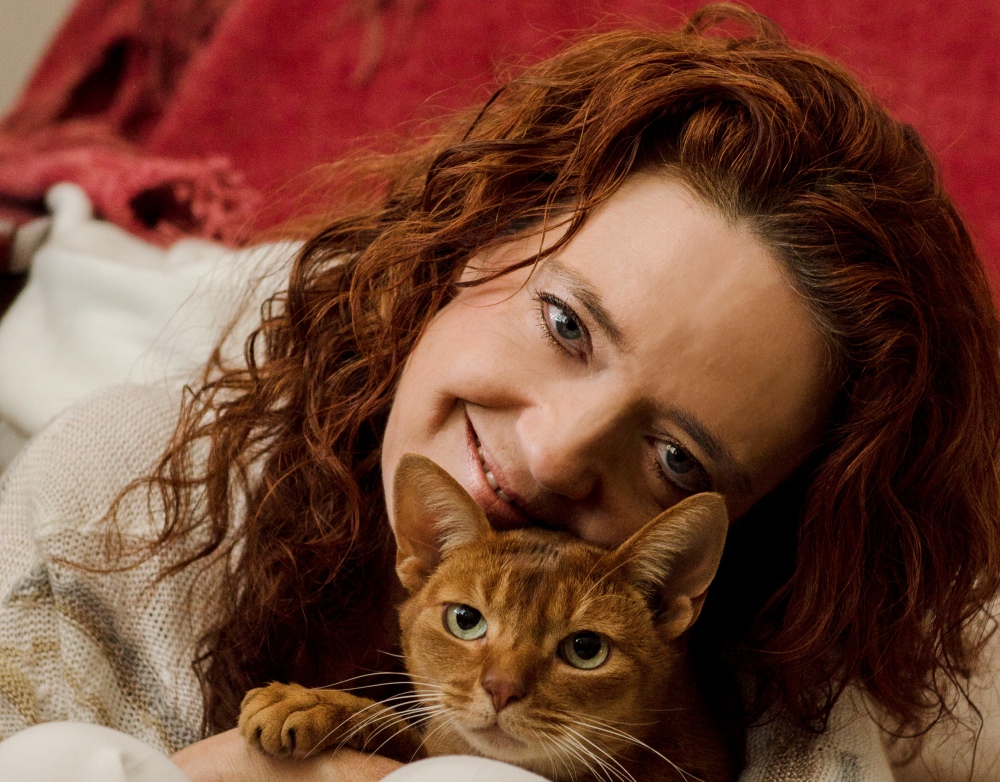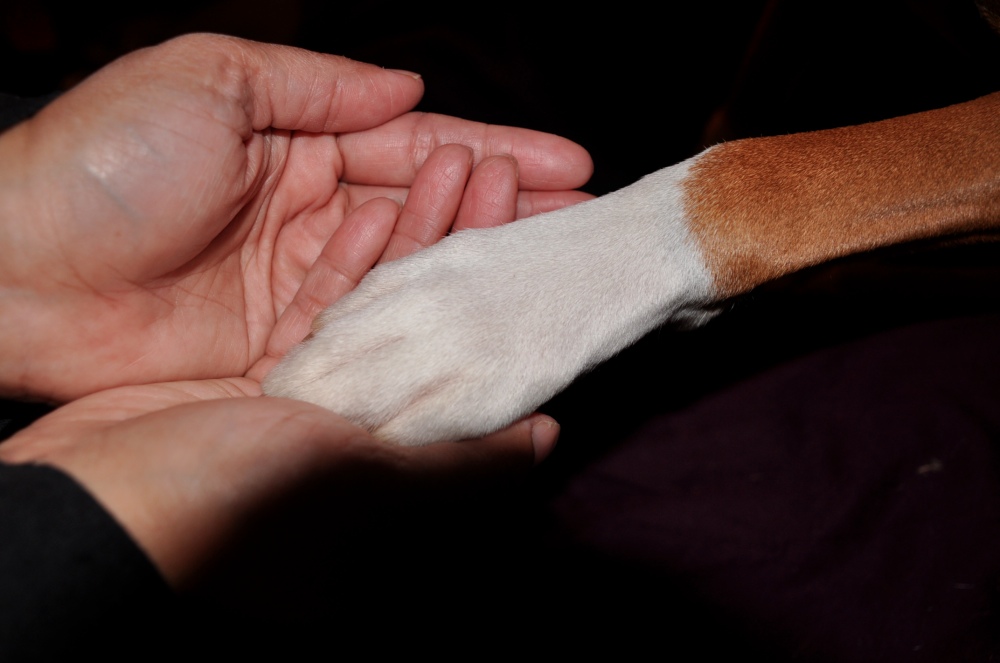
Each pet is very different. Each pet's needs are individual and should be individually evaluated in regards to the need of pre-medications. The general description of how the procedure is performed is discussed on the Overview section and on the Understanding Euthanasia section.
I strongly believe in taking an approach that will consider the individual pet in front of me and his or her special circumstances. I do not believe in taking the same approach straight across the board in a robotic manner.
Therefore, the euthanasia process may differ from individual to individual. It is my role to make this process as painless and stress free as possible, but there are conditions that may make this a challenge. In a lot of cases, for dogs, particularly larger breeds and calm dogs, it is less stressful to simply have the IV catheter placed without any pre-medications. The only discomfort the IV catheter placement will usually cause is simply a little prick. It usually takes only a few seconds.
The advantage of having the IV catheter placed with no prior injections is that there will be only one needle and the injections given thereafter, since they will be given IV, will cause no pain and no discomfort at all and all the pet will experience is the sensation of falling asleep as if you were going to the hospital for a procedure and had to be put under anesthesia. You can barely count backwards from 10 to 7 and you are sleeping...
However, there are factors that may make the placement of the IV catheter more challenging and more difficult for the pet. Therefore, in some cases, the use of a sedative may make things easier on your pet. With the use of the heavy sedative, your pet will be, for all intents and purposes, unconscious and out of pain, although he or she may not loose blinking reflexes and may have an occasional swallow.
The advantage of the pre-euthanasia injection is that it requires minimal restraint and very little time to administer the injection under the skin and that the rest of the procedure, including the placement of the IV catheter, will be done with the pet practically out of consciousness.
The disadvantage is that there will be more than one needle prick and that some of the products given may cause a slight burning or pinching sensation at the injection site. Some pets will experience a greater or lesser degree of discomfort upon the administration of such injections. Usually, the discomfort of this injection will be minimal. Unfortunately, some pets who have a lesser pain threshold may cry. Also, some pets, like cancer patients or pets with neurologic disorders may react differently to medication and to pain.
In addition, the sedative takes some time to take into effect. This will cause your pet to experience a gradual onset of a heavy drugged feeling and in some cases, the pet may attempt to "fight off" the sensation of the induced sedation/drugged sensation. In some cases, this is preferable to putting the pet through the restraint needed to the placement of the I.V.; in some cases, it is a completely unnecessary additional step and avoiding the sedative will be less stressful to the pet.
Circumstances when using a sedative is preferable:
1. When the pet experiences anxiety at being approached by a stranger or at having his or her leg touched. The most evident example of this is encountered in fractious cats or agressive dogs. Although it is evident that fractious cats require sedation, some families may feel that they cat is not fractious and loves being touched/petted. Regardless of this circumstance, we ALWAYS sedate cats (see 5. below).
2. When the pet's level of pain is such that having to move him or her in a position that will allow the placement of the IV catheter will cause too much pain. Examples of this are spinal pain, or diseases causing hyperesthesia (the exacerbation of pain).
3. When the condition of the pet causes excessive dehydration, emaciation or poor perfusion (poor circulation) which may make it difficult to find a vein and which may subject your pet to more than one prick of the needle.
4. When the pet's condition causes him or her anxiety and restlessness and when he or she is not able to rest in a lying down position comfortably.
5. Cats ALWAYS do better with the pre-euthanasia sedation as shaving the leg for the placement of the IV will inevitably cause anxiety. And although perhaps not common, it is not rare either that cats will react to the sedative no matter what we do. We do our very best to avoid the stress of the injection, but regardless, some cats will react no matter how gentle we are or what precautions we take. In some cases, it is even better to administer the sedative in 2 separate injections. In the case where we split the first injection in two, the first one will contain a tranquilizer and a pain killer. The 2nd one will be the sedative itself. The sedative tends to cause more discomfort in cats, which is why in some cases, we choose to split it and give the pain killer first. However, for some cats, it is better to "get it over with" and give it all in one shot rather than putting the cat through 2 separate injections. This is where we have to make a "judgement call". For those sweet babies who don't react well to the sedative and who may even hiss, cry and/or run away after the sedative injection, be comforted with the thought that this minimal stress is better than the stress of having taken him to the hospital where, in addition to experience the same discomfort to the sedative injection, your fur baby would have also experienced great anxiety, being away from home and loved ones.
6. Small dogs who tend to be more sensitive such as poodles, yorkies, maltese, etc... generally do better with a sedative despite the fact that the sedative injection itself can cause them some, usually minimal, discomfort. We use a different sedative in dogs which cannot be used in cats which is why there is no need to "split" the sedative such as described for cats in 5. above.
7. There are some circumstances that make it difficult EITHER WAY. The best example of this is when the pet has a heart or respiratory condition which makes it difficult for the pet to breathe or settle down. These pets are typically very anxious, easily feel "trapped" and are reluctant to stay still or lie down due to the fact that they feel like they can't breathe. Typical examples are when a pet has a tumor in the chest cavity (near the lungs or heart), when a pet has fluid accumulation in the chest as in "water in the lungs" or "around the lungs" which may be a result of a heart condition or from cancer among other conditions. In such circumstances, the pet finds it difficult to settle down which makes it difficult to place the IV without sedation AND these patients will typically "fight" the sedative because they feel like if they lie down or fall asleep they won't be able to breathe. So these patients often nod off as the effects of the sedative takes place and will startle awake and attempt to keep their head up and stay awake. These patients frequently take 2 or 3 injections of sedative to be fully sedated and may also pass away from the sedative and will be more likely to experience "agonal breathing" (see the page on Understanding Death for a description of agonal breathing and its significance). This situation can be described as being "stuck between a brick and a hard place" as it is practically impossible to place an IV with the pet being awake due to their anxiety and restlessness and on the other hand, the difficulties they experience with the sedative. In these cases, the doctor will make the choice based on the most likely procedure to produce the most peaceful possible outcome. But be aware that the patient with difficulties breathing make the most challenging euthanasias.
Other than that, it is usually preferable to limit the needles to simple placement of the IV catheter. The main question to answer is: which will cause the pet the least discomfort? The restraint needed to place the IV catheter or the discomfort related to injecting the sedative?
Sedative can cause a variety of adverse effects. And although in most cases, those adverse effects are not encountered and pets will fall asleep peacefully and within a few minutes, there is not a single sedative which works predictably and reliably in 100% of cases and which never produces adverse physical or mental effects. Some of the possible adverse effects of sedatives are: mental disorientation, salivation, nausea, vomiting, irregular breathing, respiratory collapse, termors ("twitches"), seizures, loss of blood pressure (leading to difficult or impossible IV placement, which may require an alternate euthanasia technique administered painlessly internally), restlessness and excitability, etc... It is also possible that some pets are less sensitive to the sedative and may need 2 or 3 sedative injections before they finally fall asleep. Although I mention these possible adverse reactions here, they are RARE and, unfortunately, cannot be avoided when the sedative is necessary.
Another factor to consider is the mental disorientation that accompanies the sedative. The sedative takes anywhere between 2 minutes and 20 minutes to take into effect depending on individual sensitivity to sedatives and the condition of internal organs. During the period of time elapsing between the injection and the time when the sedative has taken full effect, pets may experience greater or lesser mental disorientation and discomfort (you may have experienced this if you have ever received a sedative). The reactions vary. Most pets appear peaceful, but some don't like the sensation during the period of time between the injection and the time when they are fully under the effect of the sedative, regardless of the kind of drug used. Occasionally, there may be an excitatory phase which can last a few minutes before the full effect of the sedative has been achieved. This excitatory phase can be distressing to watch as they may get disoriented and restless. Once the drug has taken full effect, the pet will be sleeping, peaceful and for all intents and purposes, out of consciousness and out of pain. It is impossible to predict which pet will experience an adverse reaction to the sedative and again, this is why we must weigh the pros and cons of using a sedative prior to the IV placement.
We will seek your opinion on this matter, but if you are not sure, you can rely on our experience in evaluating the situation and your pet's condition, level of discomfort and level of anxiety and to take the best approach with will cause your pet the least discomfort and stress. It can happen that the doctor may think the pet will be fine without sedative and that after attempting to place the IV catheter, will realize that the pet will be better off with the sedative. In this case, at the slightest sign of discomfort on the part of the pet or at the first indication that the IV will be difficult to place, the doctor will stop the procedure and will administer a sedative prior to continuing.
Please remember that although our experience in these matter is great and our success in making this difficult moment peaceful and painless for your pet, some factors can be impossible to predict and your pet may have an adverse reaction. We do all we can to avoid this and to choose the best approach for your baby.





